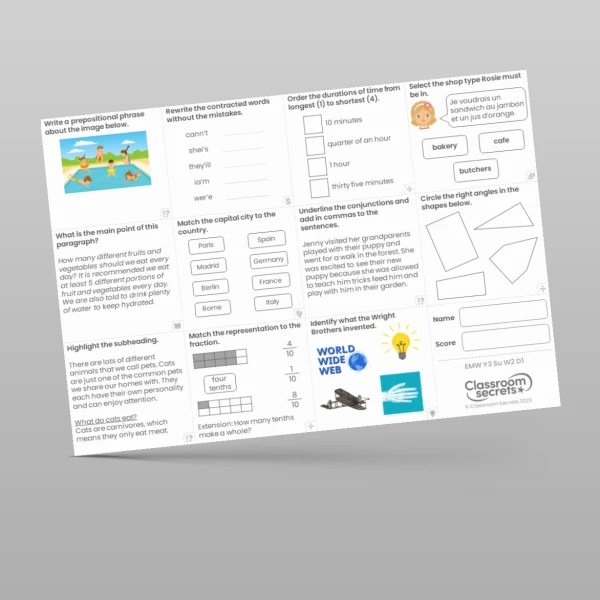

Give your class the opportunity to put their suffix knowledge to the test with this Key Stage 2 Adding Suffixes Test Practice. This resource includes four levels of challenge and one worksheet for each level. There are 12 multiple choice questions on each test for children to show what they know.
Use this resource as an independent learning activity during your assessment periods throughout the key stage. Alternatively, you could use it as a differentiated task in one year group and use it multiple times to show progress; it's entirely up to you! Each level of challenge comes with a marking scheme that will help you whizz through your marking, or they can be used as a peer or self-assessment tool.
Differentiation:
Beginner Choose one suffix to add to the root word. Suffixes used include –ment, –ness and –less, –ful and –ly. Aimed at Year 3 Developing/Year 4 Emerging.
Easy Choose one suffix to add to the root word where most root words are more than one syllable. Suffixes include –ation, –ly, –ous, –ed, –ing and –er. Aimed at Year 3/4 Expected.
Tricky Choose two suffixes to add to the root word. Suffixes include –ate, –ise, –ify and –en. Suffixes from previous levels also used. Aimed at Year 5 Expected/Year 6 Developing.
Expert Choose two suffixes beginning with vowels to add to the root word where some root words end in –fer. Suffixes include –ed, –ing, –al, –ence and –able. Suffixes from previous levels also used. Aimed at Year 5/6 Expected.
Curriculum Objectives
- Formation of nouns using suffixes such as –ness, –er and by compounding [for example, whiteboard, superman] / Formation of adjectives using suffixes such as –ful, –less (A fuller list of suffixes can be found in the year 2 spelling section in English Appendix 1) / Use of the suffixes –er, –est in adjectives / Terminology for pupils: compound / Terminology for pupils: suffix
- Converting nouns or adjectives into verbs using suffixes [for example, –ate; –ise; –ify]
Tags
Prefixes and Suffixes
Test Practice
2G6.3
5G6.3
Year 3 Test Practice
Year 4 Test Practice
Year 5 Test Practice
Year 6 Test Practice
Year 6 SATs Preparation











